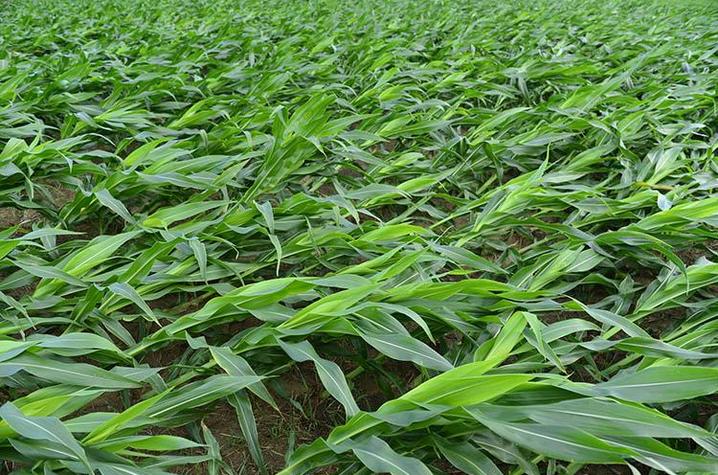Innovative Research Could Result in a Billion More Being Fed

Faced with a rapidly increasing global population, an interdisciplinary research group at the University of Kentucky, Clemson University and the University of Idaho is examining ways to overcome a major barrier in improving grain yields.
Stalk lodging, when a grain stem snaps prior to harvest, is a serious problem in most grain crops, resulting in annual yield losses of approximately 20 percent. The problem can arise from any number of reasons; high nitrogen levels, storm damage, disease and seed type are just a few of the causes.
This four-year, $6 million research project, which is funded by the National Science Foundation, will take a unique approach to studying stalk lodging in corn and sorghum with the intent of breeding stronger plants. The group, the KIC (Kentucky/Idaho/Clemson) Biomechanics Consortium, is an interdisciplinary team consisting of plant scientists, engineers and mathematicians. Combining mathematical modeling with innovative technology, the team will examine the microstructure of large populations of plants to predict the underlying features that cause, and also may be used to overcome, stem lodging.
“If they get positive results from this research, it could really have some good impacts on how we grow corn and sorghum and improve yields from Kentucky through the 'I' states and out to western Nebraska — throughout the world for that matter,” said Chad Lee, director of the UK Grain and Forage Center of Excellence.
Principal investigator Seth DeBolt, horticulture professor in the UK College of Agriculture, Food and Environment, said the team will tackle the problem from a biomechanical standpoint.
“A very clever guy on this grant, Daniel Robertson, a mechanical engineer on the University of Idaho faculty, has produced several portable biomechanical devices that can be deployed in corn and sorghum fields to rapidly test stem strength,” DeBolt said. “We’ll use those devices to determine the lodging resistance of multiple corn and sorghum varieties, and then using engineering techniques, mathematics and statistics, we should be able to predict why particular varieties are stronger or weaker. In particular, we are hoping to determine both genetic and environmental factors that influence stalk strength.”
Rajan Sekhon, a plant molecular biologist in the Clemson College of Science, has already begun to map the genetic mechanisms behind stem breakage using the new generation devices. A Clemson mathematician, Chris McMahan, will bring additional math and statistics expertise to the project and will further the ability of the team to link the genetics and biomechanics of stalk lodging. DeBolt is an expert on cell walls, which are the key structures in biomechanics. His lab has been actively engaged in studying what creates the strength and the structure by plant carbohydrates. Also at UK, Montse Salmerón, assistant professor in the Department of Plant and Soil Sciences, and engineers Eduardo Santillan-Jimenez and Jonathan Wenk are part of the team.
“That’s why this project is going to be really interesting; it’s very interdisciplinary,” said Wenk, associate professor and Gill Professor in Engineering in the UK Department of Mechanical Engineering. “I know nothing about the genetics of corn, but I understand the relationships between the microstructure of a material and how that’s going to make a structure behave on a larger scale. I think one of the really neat big picture ideas of this project is basically, seeing if we can engineer the microstructure of the stalk in such a way that this thing is going to behave better as a whole structure and hold up to different types of loading that might make it snap.”
DeBolt sees this research as just the beginning.
“Our goal is to bring more people into this (consortium) and to try to use the combination of engineering and biology to tackle problems that can help humanity,” he said. “If this works, we’ll then go for root lodging obviously, but there are a lot of other complex traits that are associated with yield and resource allocation within the plant that have not been touched because of their complexity.”
Credits
Text by Carol Lea Spence (UK Public Relations & Marketing).
